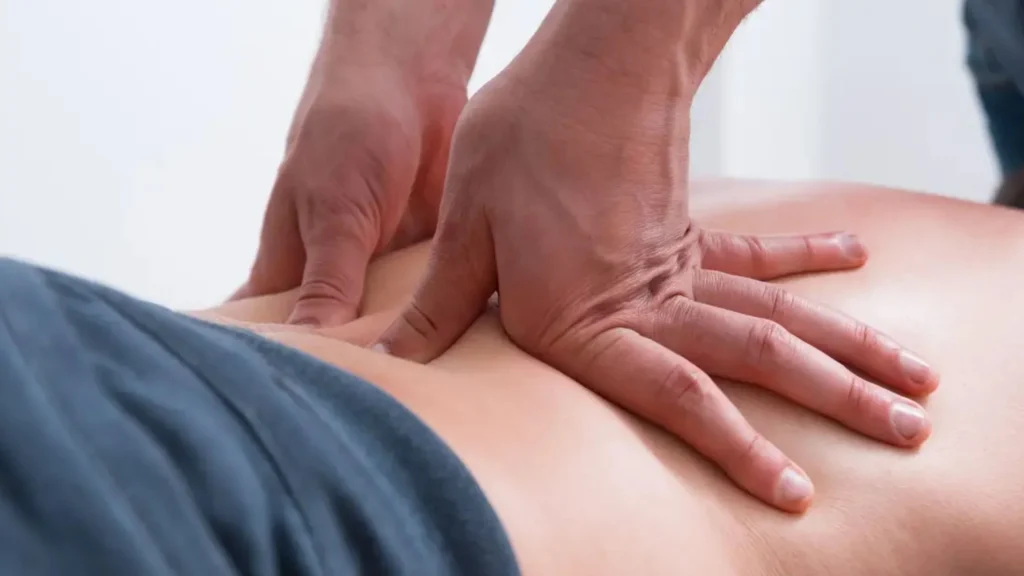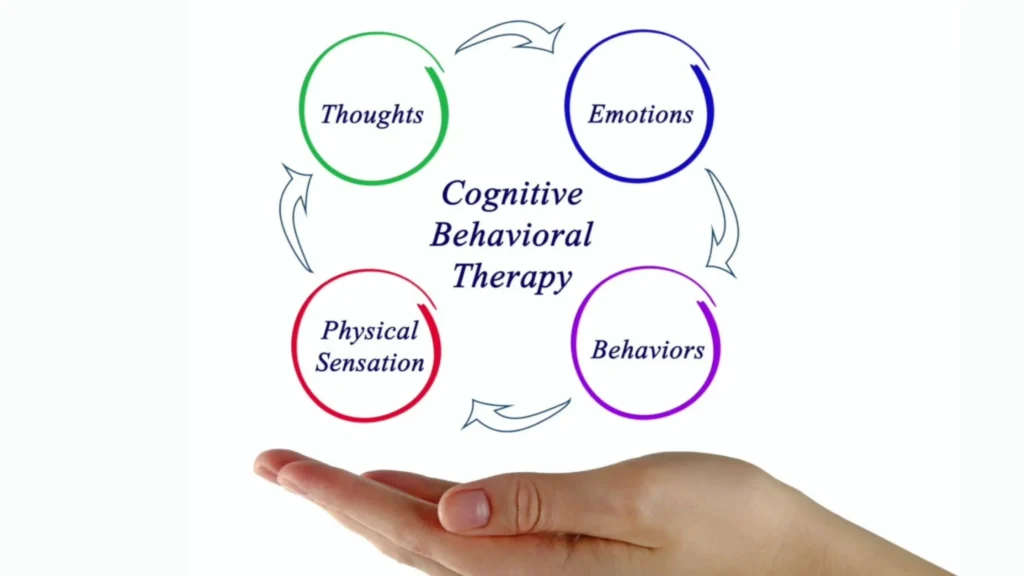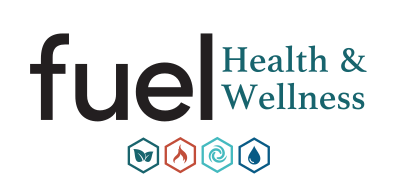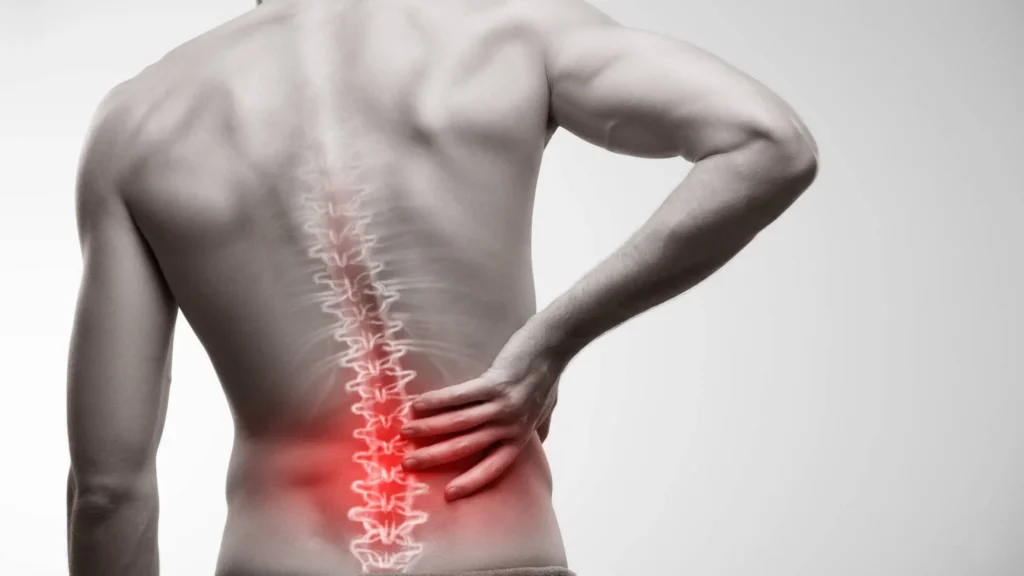Chronic back pain is a common yet debilitating condition that affects thousands of people in Grand Rapids, impacting daily life, work, and overall well-being. Many individuals search for alternative and complementary therapies beyond conventional medicine, with some turning to fuel health wellness for additional support. This article explores various therapeutic options—from physical therapy Grand Rapids and massage therapy to chiropractic care, cognitive behavioral therapy, mindfulness practices, and alternative treatment modalities—to help manage chronic back pain effectively. Patients are encouraged to contact us for more personalized guidance, enabling them to work collaboratively with healthcare professionals to develop treatment plans that address both the physical and emotional dimensions of pain.
Key Takeaways
- Physical therapy options can improve mobility, reduce pain, and strengthen back muscles for long-term relief.
- Massage therapy offers relaxation and improved blood flow, reducing muscle tension and supporting recovery.
- Chiropractic care focuses on correcting spinal misalignments, while cognitive behavioral therapy addresses the mental and emotional factors linked to chronic pain.
- Mindfulness, relaxation, and alternative therapies such as acupuncture and biofeedback provide supplementary benefits in managing pain.
- An integrated approach combining multiple therapies may yield the most effective outcome for managing chronic back pain.
Discover Effective Physical Therapy Options for Back Pain Relief

Physical therapy is a cornerstone in the management of chronic back pain. It employs an array of techniques that help to improve flexibility, strengthen muscles, and restore function. Therapists design individualized treatment plans that cater to patient needs, drawing from evidence-based resources and clinical trials. Many studies show that early and consistent physical therapy intervention can reduce the risk of chronic pain progression, lower dependency on pain medication, and enhance quality of life.
Understand Different Types of Physical Therapy Techniques
Physical therapy techniques span from manual therapy to structured exercise programs. Methods such as the McKenzie method, spinal mobilization, and myofascial release are effectively used to alleviate pain by targeting specific areas of tissue tension and stiffness. For instance, manual therapy involves hands-on techniques to release tight muscles, while therapeutic exercises aim to correct posture imbalances and improve core stability. Research indicates that a combination of manual therapy and tailored exercise plans can improve range of motion by up to 35% in chronic back pain patients. Additionally, modalities like ultrasound and electrical stimulation are sometimes incorporated to reduce inflammation and expedite healing, ensuring that patients not only experience temporary relief but also work toward sustainable recovery.
Find Certified Physical Therapists in Grand Rapids
Patients are encouraged to seek certified physical therapists who are experienced in treating musculoskeletal pain. In Grand Rapids, many clinics specialize in back pain management using the latest in rehabilitation technology and evidence-based practices. These professionals typically hold advanced certifications and have real-world experience developing customized programs. Testimonials from local patients often highlight improvements in their pain and functional abilities after structured physical therapy. Ensuring that therapists are licensed and recognized by reputable organizations also makes it easier for patients to communicate with their primary care providers about insurance coverage and treatment efficacy.
Schedule Regular Appointments for Optimal Results
Timely and consistent appointments with a physical therapist are essential for progress. Consistency in therapy not only reinforces proper movement techniques but also allows for ongoing adjustments based on progress and feedback. Regular sessions—combined with prescribed at-home exercises—have been shown to decrease pain intensity by 25% to 40% within a few months. Each session builds upon the last, gradually reducing the reliance on pain medications and empowering patients to improve their activities of daily living through stronger, better-coordinated back muscles.
Learn About Exercises Tailored for Back Pain Management
A wide range of exercises are aimed at improving back stability and mobility. These include stretching routines, core strengthening workouts, and low-impact aerobic exercises such as swimming or cycling. For instance, targeted stretching can relieve tension in the lumbar spine, while core-strengthening exercises help support long-term spinal health. Local physical therapists often provide exercise demonstrations and written programs that ensure the proper execution of moves to minimize stress on the back. Evidence suggests that adhering to a well-structured exercise plan can reduce pain symptoms and enhance overall endurance, making everyday activities easier to perform.
Monitor Your Progress With Your Physical Therapist
Tracking progress through regular assessments is an important aspect of physical therapy. Therapists typically use metrics such as range of motion, pain scales, and functional tests to monitor improvements. This data not only helps in tailoring future sessions but also provides patients with tangible evidence of their recovery. Keeping a detailed log of pain levels, exercise routines, and improvements in mobility can motivate patients and enable adjustments when expectations are not met. In Grand Rapids, many clinics incorporate digital tracking systems that allow both therapists and patients to see progress over time, ultimately fine-tuning the approach for maximum benefit.
Explore the Benefits of Massage Therapy for Back Pain

Massage therapy has been recognized for centuries as a natural method of alleviating muscular discomfort and promoting relaxation. For chronic back pain sufferers, it serves as a therapeutic adjunct that enhances blood flow, reduces muscle stiffness, and promotes overall physical and emotional well-being. The benefits of massage extend well beyond immediate pain relief; regular sessions can help restore proper muscle balance and reduce the frequency of pain episodes.
Identify Types of Massage Therapies Available in Grand Rapids
Grand Rapids hosts various types of massage therapies to suit individual needs. Swedish massage is popular for its gentle rhythmic strokes that relax the muscles, while deep tissue massage focuses on targeted pressure to alleviate deeply embedded muscle tension. Other modalities such as trigger point therapy and myofascial release are designed to address specific areas of discomfort. Each type has its own approach to stimulating circulation and releasing toxins, with many therapists recommending a combination of techniques for the best results. Clinical research reveals that regular massage can lower cortisol levels and increase serotonin levels, which in turn can sustain a balanced mood and improve overall pain thresholds.
Recognize Signs That Massage Therapy Could Help
Patients with chronic back pain often show signs that indicate a beneficial response to massage therapy. These include areas of tightness along the spine, recurrent muscle spasms, and a buildup of tension around the shoulder and neck areas. Individuals reporting stiffness upon awakening or after prolonged periods of sitting may particularly benefit from a tailored massage therapy routine. Recognizing these symptoms early allows patients to seek interventions that prevent further tissue damage. Furthermore, massage therapy proves valuable in cases where back pain is compounded by stress and anxiety, as the relaxation response it triggers can provide both physical comfort and mental clarity.
Set Up Sessions With Licensed Massage Therapists
Choosing a licensed massage therapist is key to ensuring that the therapy is both effective and safe. In Grand Rapids, numerous centers specialize in therapeutic massage dedicated to pain relief. Licensed practitioners often undergo rigorous training that equips them with the skills to target specific muscular imbalances. Scheduling sessions should commence with an initial consultation, during which the therapist assesses the patient’s condition and sets realistic goals. Studies have indicated that evidence-based massage interventions can reduce pain levels by nearly 30% over several weeks. This process allows for a gradual reduction in pain severity and helps create a sustainable plan for long-term wellness.
Communicate Your Preferences and Tension Areas
Effective massage therapy is built on clear communication between the patient and the therapist. It is essential for patients to inform their therapist about their specific tension areas, pain thresholds, and massage preferences. Whether a light touch is more soothing or deeper pressure is required to release tight muscles, these nuances must be shared during the consultation. Open dialogue ensures that the therapist can customize each session to address the unique aspects of an individual’s pain and physical condition. Furthermore, this communication builds trust and a sense of partnership in the healing process, ultimately enhancing the overall effectiveness of the therapy.
Combine Massage With Other Therapies for Enhanced Relief
Many patients find that integrating massage therapy with other treatment modalities amplifies the overall therapeutic benefits. Combining massage with physical therapy, acupuncture, or even mindful exercise regimens can create a synergistic effect that offers comprehensive pain relief. For example, massage sessions can prepare the muscles for more rigorous physical therapy exercises by reducing stiffness and increasing flexibility. This holistic approach has been shown to improve outcomes significantly, as the body can then perform stretches and exercises more effectively without additional strain. Health professionals in Grand Rapids often advocate for an integrated care plan, which is supported by emerging evidence from systematic reviews on complementary approaches for pain management.
Investigate Chiropractic Care Options for Back Pain Relief
Chiropractic care is another widely adopted treatment for managing chronic back pain. It centers on the diagnosis and manipulative treatment of musculoskeletal disorders, especially those involving the spine. Chiropractors in Grand Rapids use a range of techniques to realign the spine, reduce pain, and improve nervous system function. This non-invasive approach is supported by clinical trials that suggest therapeutic adjustments can rapidly reduce pain and improve function.
Assess What to Expect During a Chiropractic Session
During a chiropractic session, patients can typically expect a comprehensive evaluation that includes physical examinations, imaging studies, and a discussion of symptoms and medical history. The chiropractor then applies specific spinal adjustments using hands-on techniques to realign the vertebrae and alleviate pressure on nerves. Many patients report immediate relief following these adjustments, with improvements in mobility and a reduction in pain levels often observed within the first treatment session. Detailed assessments help tailor each session to the individual’s unique spinal structure, ensuring that the therapy targets the exact cause of the pain.
Learn About Adjustments and Their Benefits
Spinal adjustments are the cornerstone of chiropractic care. These adjustments aim to restore proper alignment of the spine, which in turn improves nerve communication and reduces muscle tension. Research has demonstrated that such adjustments can decrease pain intensity by as much as 40% in patients with chronic back pain, particularly when combined with stabilization exercises. The benefits extend further to improved posture, increased range of motion, and enhanced overall well-being. By decreasing nerve interference, chiropractic adjustments may even improve the functionality of internal organs, contributing to a holistic sense of health.
Research Experienced Chiropractors Near You
Finding a well-reputed and experienced chiropractor is crucial for successful pain management. In Grand Rapids, there are numerous clinics where practitioners focus on evidence-based chiropractic treatments. Patients are encouraged to check credentials, read reviews, and ask for recommendations from their primary care providers. A trustworthy chiropractor will offer a clear treatment plan, including the number of sessions recommended and expected outcomes. This transparency builds confidence and ensures that patients remain active participants in their recovery. Moreover, many clinics offer flexible appointment scheduling and follow-up care, making it easier to integrate chiropractic visits into a busy lifestyle.
Understand the Role of Maintenance Visits
In addition to acute care, many patients benefit from regular maintenance visits to manage chronic back pain. These visits help to reinforce the corrections achieved in earlier sessions and prevent relapse. Maintenance chiropractic care may include periodic adjustments, targeted exercises, and lifestyle recommendations that support spine health. Studies have shown that routine maintenance can reduce the recurrence of back pain episodes and can help sustain improvements in pain levels. The long-term approach focuses on proactive management rather than reactive treatment, ensuring that the benefits of chiropractic care are maintained over time.
Compare Chiropractic Care With Other Treatments
Comparing chiropractic care with other forms of treatment, such as physical therapy or surgical interventions, reveals several advantages. Chiropractors offer a non-invasive and drug-free approach that minimizes potential side effects associated with medications and surgery. Many patients appreciate the hands-on aspect of chiropractic care, which can provide immediate tactile feedback and a sense of direct healing. Furthermore, insurance coverage for chiropractic sessions is often more favorable compared to surgical procedures, making it an accessible option for many. Research consistently supports chiropractic care as an effective component of a multidisciplinary approach to managing chronic back pain.
Utilize Cognitive Behavioral Therapy for Back Pain Management

Cognitive Behavioral Therapy (CBT) is becoming an increasingly popular treatment for chronic back pain as it addresses the psychological aspects of pain. By focusing on changing negative thought patterns, CBT helps patients manage the emotional distress often associated with chronic pain. This therapy is especially effective for individuals whose pain is exacerbated by stress, anxiety, or depression. CBT techniques empower patients to develop coping strategies that mitigate the impact of pain on daily activities, thereby improving overall quality of life.
Understand the Connection Between Pain and Mental Health
Chronic pain is not merely a physical symptom; it is closely intertwined with mental health. Negative emotions can amplify pain perception, while ongoing pain can contribute to mood disorders. CBT helps break this cycle by addressing maladaptive thoughts and behaviors that contribute to both pain and depression. Clinical studies have shown that patients who undergo CBT experience an average of a 30% reduction in pain intensity and an improvement in their mood and coping strategies. By understanding the link between pain and mental health, patients are better equipped to manage their symptoms holistically.
Find Qualified Therapists Specializing in Chronic Pain
Finding a qualified therapist who specializes in chronic pain management through CBT is essential for effective treatment. In Grand Rapids, many mental health professionals are trained in CBT techniques and have experience working with patients suffering from chronic pain. These therapists work closely with patients to identify negative thought patterns and replace them with more constructive beliefs. A well-qualified therapist will have certifications and positive testimonials that attest to their efficacy in pain management. This specialized approach often results in significant improvements not only in pain perception but also in the overall mental well-being of patients.
Explore Techniques to Change Pain Perception
CBT employs a variety of techniques designed to alter how patients perceive and respond to pain. Methods such as guided imagery, distraction techniques, and cognitive restructuring become powerful tools in reducing the intensity of pain sensations. Patients learn to challenge and modify negative thoughts about their pain, which, in turn, reduces anxiety and stress. For example, a common CBT exercise might involve keeping a pain diary to identify triggers and subsequent thought patterns, followed by structured exercises aimed at reframing these beliefs. Over time, these techniques can lead to long-term improvements in how patients manage pain on a daily basis.
Participate in Group Therapy for Shared Experiences
Group CBT sessions offer an additional benefit by providing a supportive community of individuals who share similar challenges. By participating in group therapy, patients not only learn coping strategies from the therapist but also gain insights from the experiences of others. This shared environment can reduce feelings of isolation and foster a sense of empowerment among participants.
Studies indicate that group therapy can enhance the outcomes of CBT by building social support networks, which are a key element in maintaining positive progress. Additionally, for athletes looking to recover mentally and physically after an injury, Prevent Sports Injuries Guidance From Grand Rapids Professionals offers valuable insights on maintaining health and avoiding setbacks.
Focus on Developing Coping Strategies
Central to CBT is the development of practical coping strategies that patients can use whenever they experience pain. These strategies may include relaxation techniques, self-monitoring of pain, and the use of positive affirmations. The goal is to provide patients with a toolkit that they can access independently to manage flare-ups and sudden increases in pain intensity. Evidence has shown that patients who master these coping strategies not only report lower pain levels but also demonstrate improvements in physical function and overall quality of life. This self-empowerment is a vital component in managing long-term pain and participating actively in one’s recovery.
Implement Mindfulness and Relaxation Techniques
Mindfulness and relaxation techniques have gained recognition as effective methods for managing chronic back pain. These practices focus on bringing the mind’s attention to the present moment, thereby reducing the mental amplification of pain. Techniques such as meditation, breathing exercises, and guided relaxation can significantly lower stress levels and promote physical relaxation. For chronic back pain patients, integrating these techniques into daily routines can improve both mental clarity and physical functioning, supporting the overall pain management plan.
Discover Various Mindfulness Practices for Pain Relief
A wide range of mindfulness practices are available that specifically target pain relief. Techniques include seated meditation, gentle yoga, progressive muscle relaxation, and mindful walking. Each practice encourages patients to become more aware of bodily sensations without judgment, helping them disconnect from the spiral of pain-related rumination. Research suggests that regular mindfulness practice can lead to a 25% improvement in pain acceptance and reduction of pain catastrophizing, which is the tendency to amplify pain through negative thinking. Patients are encouraged to experiment with various practices until they find the method that resonates best with their lifestyle and pain management goals.
Learn About Breathing Exercises to Reduce Tension
Deep breathing exercises play a crucial role in relaxation techniques for pain relief. Controlled, mindful breathing not only helps to oxygenate the body but also activates the parasympathetic nervous system, promoting a state of calm. Techniques such as diaphragmatic breathing and the 4-7-8 breathing method are particularly effective in reducing muscle tension and lowering heart rate. Clinical evidence supports that deep breathing can reduce subjective pain intensity by up to 20% when practiced regularly, and it is often recommended as both a standalone technique and a complement to other therapies. Incorporating these exercises into a daily routine can lay the foundation for sustained stress reduction and improved focus on recovery.
Try Meditation Apps to Guide Your Practice
For many individuals, guided meditation apps provide an accessible way to integrate mindfulness into daily life. These apps offer structured sessions that range in duration and focus, making it easier for beginners to adopt a regular meditation practice. Apps typically include features such as timer settings, background sounds, and progress tracking, which encourage consistency. Many users report that even a 10-minute daily meditation session can alleviate stress and enhance their overall sense of well-being, leading to improved pain management outcomes. As digital tools continue to evolve, they offer personalized experiences that can cater to individual needs, further supporting holistic pain management.
Commit to a Daily Routine for Best Results
Consistency is vital when implementing mindfulness and relaxation techniques. Establishing a daily routine can help reinforce new habits and promote a lasting change in the way the body responds to stress and pain. Whether it’s setting aside specific times in the morning or before bed, a consistent practice routine maximizes the benefits of these techniques by gradually rewiring the neural circuits involved in pain perception. Patients are advised to start with short sessions and increase the duration progressively, ensuring that the practice becomes an integral part of their self-care regimen. Consistent mindfulness practice has been shown to not only reduce pain intensity but also improve sleep quality and emotional regulation, contributing significantly to overall recovery.
Join Local Mindfulness Groups in Grand Rapids
Connecting with like-minded individuals through local mindfulness groups or meditation classes can enhance the benefits of solitary practice. These groups offer opportunities for social support, guided sessions, and shared learning, all of which contribute to maintaining motivation and ensuring consistency. In Grand Rapids, many community centers and wellness clinics offer group sessions that are tailored for individuals dealing with chronic pain. Beyond the immediate benefits of improved mindfulness practice, the social interaction inherent in group sessions provides additional emotional support, reducing the isolation that can accompany chronic pain. This communal approach can create a network of accountability and encouragement, ultimately reinforcing daily mindfulness practices.
Review Alternative Therapies for Managing Chronic Back Pain
In addition to conventional treatments, several alternative therapies have shown promise in managing chronic back pain. These therapies often complement mainstream treatments and provide a holistic approach that targets pain on multiple levels. Alternative therapies for back pain can address underlying issues like inflammation, stress, and muscle imbalances, offering patients more options to customize their pain management plans.
Investigate Acupuncture and Its Benefits
Acupuncture, a component of traditional Chinese medicine, involves the insertion of fine needles at specific points on the body to stimulate energy flow and alleviate pain. Many patients have reported significant reductions in back pain intensity and improved mobility after a course of acupuncture treatments. Research studies indicate that acupuncture can stimulate the release of endorphins—the body’s natural painkillers—resulting in measurable pain relief. The therapy has minimal side effects and can be integrated with physical therapy and other modalities to create a comprehensive treatment plan. In Grand Rapids, several clinics specialize in acupuncture for pain management, offering practitioners skilled in both ancient techniques and modern applications.
Explore the Role of Biofeedback in Pain Management
Biofeedback is a technique that trains individuals to regulate physiological functions such as heart rate and muscle tension. Through the use of sensors and real-time monitoring, patients learn to control bodily responses that contribute to chronic pain. Biofeedback helps patients visualize the impact of stress on their muscles and enables them to proactively reduce tension that may worsen back pain. Clinical trials have demonstrated that biofeedback can improve pain management by up to 30% when combined with other therapies. This method empowers patients with the ability to reduce pain autonomously, making it a valuable addition to a multifaceted treatment strategy.
Check Out Herbal Remedies: What to Consider
Herbal remedies have been used traditionally to manage pain and inflammation. Options such as turmeric, ginger, and willow bark offer natural anti-inflammatory properties that may reduce back pain associated with chronic inflammation. While these remedies are not a standalone solution, they can serve as adjuncts to other treatment modalities. It is crucial for patients to consult with healthcare professionals before incorporating herbal supplements, particularly if they are taking medications or have preexisting conditions. Scientific reviews suggest that certain herbal compounds can decrease inflammation and provide pain relief in patients with musculoskeletal conditions when used appropriately.
Research Yoga Classes Focused on Back Pain Relief
Yoga, with its emphasis on stretching, strengthening, and mindfulness, offers an effective approach to managing chronic back pain. Specific yoga classes tailored for back pain focus on improving posture, increasing flexibility, and releasing muscular tension. These sessions often incorporate gentle poses that target the lower back and core, thereby reducing stress on the spine. Numerous studies have shown that consistent yoga practice can lead to a significant decrease in pain levels and improved functional mobility. In Grand Rapids, many studios now offer classes specifically designed for individuals with back pain, ensuring that modifications are in place to accommodate their limitations, thus making yoga an accessible and effective alternative therapy.
Understand the Impact of Dietary Changes on Pain
Dietary modifications can also play a role in managing chronic back pain. An anti-inflammatory diet rich in omega-3 fatty acids, antioxidants, and lean proteins can help reduce body-wide inflammation that exacerbates pain conditions. Patients often report improvements in their pain levels when they reduce the intake of processed foods, sugars, and saturated fats. A balanced diet supports overall health and can enhance the effectiveness of other therapies by ensuring the body has the necessary nutrients for tissue repair and immune function. Nutritionists in the Grand Rapids area often work closely with patients dealing with chronic pain, tailoring diet plans that complement their overall therapy regimen for more comprehensive pain management.
At Fuel Health Wellness, we provide expert nutritional guidance tailored to support pain management and overall wellness. Nutritionists in the Grand Rapids area often work closely with patients dealing with chronic pain, tailoring diet plans that complement their therapy regimen for more comprehensive pain management.
Frequently Asked Questions
How does physical therapy help manage chronic back pain?
Physical therapy improves back pain by strengthening core muscles, enhancing flexibility, and promoting proper body mechanics. Regular, individualized exercise plans and targeted techniques can reduce pain intensity and improve daily functioning significantly.
Are chiropractic adjustments safe for chronic back pain sufferers?
Yes, chiropractic adjustments are generally safe when performed by certified professionals. These adjustments realign the spine, reduce nerve pressure, and enhance mobility, although patients should consult with their healthcare provider before beginning any new treatment modality.
Can mindfulness and meditation significantly reduce back pain?
Mindfulness and meditation help reduce back pain by lowering stress and promoting relaxation, which in turn decreases muscle tension. Consistent practice has been shown to improve overall pain management, making it a valuable complement to other therapies.
What role does acupuncture play in pain management?
Acupuncture stimulates specific points to boost the release of endorphins and decrease pain signals. Many patients experience notable pain relief and improved function, making it a viable alternative to conventional pain medications.
How important is diet in managing chronic back pain?
Diet is a critical component because an anti-inflammatory diet can reduce overall inflammation and support tissue repair. Nutritional adjustments, coupled with other therapies, provide a holistic approach to reducing chronic pain symptoms.


